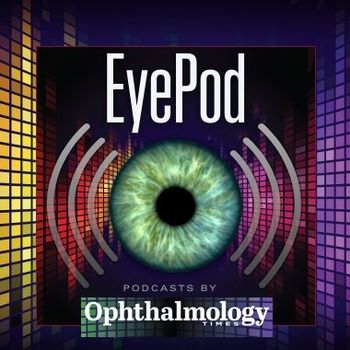
Emerging Therapy for Open-Angle Glaucoma
Transcript:
Sahar Bedrood, MD, PhD: Discuss the potential for bimatoprost sustained release for open-angle glaucoma.
Joseph F. Panarelli, MD: This is definitely one of the more exciting advances in our field. The fact that we actually have an injectable form of glaucoma therapy. So bimatoprost SR is going to be probably the first of several medicines that are going to be hitting the market over the next several years. I think this really does have the potential to be a game-changer. We talk a lot about compliance and really when we have an injectable form of medicine, we really take compliance out of our patients’ hands. And so all we ask of them to do is to come once every several months to get their treatment. The big question we have with injectable forms of medicine is going to be, is the safety there? Are there any issues at all with these medications being delivered once every 6 months into the eye? We have questions regarding issues with the cornea, and we have concerns about infection. If we can show that there is very good safety profiles for these medicines, I think we’re going to see a lot of physicians using this treatment early in their treatment algorithm.
One of the questions that remains to be answered is if you have a patient who’s on several classes of medications, can you put them on one medicine that you inject once every several months and get that same level of efficacy? So, if you have a patient who’s taking two or three bottles and is compliant, say, 50 to 60% of the time, if you give them an injection of one medicine, can you achieve some of the same effects? Can you stop their disease progression? I think that’s a big question that remains to be answered.
Dr. Bedrood: What do we know about the safety and efficacy of this product?
Dr. Panarelli: We’ve seen several abstracts at the Academy of Ophthalmology and there will be several more abstracts at the American Glaucoma Society that provides us more insight into the results of the phase III trials with bimatoprost SR. But from what I’ve seen, the safety and efficacy data is actually quite good.
One of the things that has impressed me most is the fact that a lot of patients (up to 80%) that receive three doses over the first year did not need to be rescued over the next year that they were followed.
This can have a meaningful impact for our patients. It’s one thing to talk to a patient and tell them that they’re going to have an injection once every 4 to 6 months for the rest of their lives, but if we can give a patient a loading dose of a medicine and not need to reinject them from anywhere from 1 to (maybe) 3 years, that will resonate well with our patients. This is something where the patients will look at the risk-benefit, and many of them would actually be more excited about getting an injection versus starting topical therapy for the rest of their lives.
As the clinician, we really need to be the ones also that feel comfortable. We do have some safety questions. We want to be sure that are no detrimental effects to the cornea. We want to make sure that the infection risk is low. But I think we’ve seen from our retina colleagues that serial injections, if performed properly, can have very low rates of infection and can be done safely in the office.
For a lot of us as glaucoma doctors, we’re very excited to have an injectable form of medicine because we do think that this will increase our compliance and may actually even cause some changes to the outflow pathway that may modify the actual disease.
Dr. Bedrood: How do you foresee this product being used in clinical practice?
Dr. Panarelli: Like with some of our topical therapy, many physicians will not go and start using this as a first-line therapy. I think many physicians will use it as a second-line treatment modality when a patient is progressing despite treatment with, say, a prostaglandin or the physician had not gotten the pressure reduction that they expected from SLT. They may move onto bimatoprost SR. I think as we get more comfortable with the injection, as we’re more certain about the safety of this procedure, you may start seeing doctors use it earlier in the treatment algorithm. For me, if I have a patient who has more advanced disease who needs better pressure reduction, I may actually move on to this and start with an injection rather than starting with topical therapy.
One of the other nice things about bimatoprost SR is the fact that the side effect profile is rather nice compared to topical therapy. We all know with prostaglandin analogues, we have issues with hyperemia, iris pigmentation changes, skin pigmentation changes, and even periorbital fat atrophy. We’re not going to see these problems with the injectable form of the medicine. So I think for a lot of our patients who are apprehensive about starting a prostaglandin analogue for those reasons, this might be a suitable alternative.
Newsletter
Don’t miss out—get Ophthalmology Times updates on the latest clinical advancements and expert interviews, straight to your inbox.













































